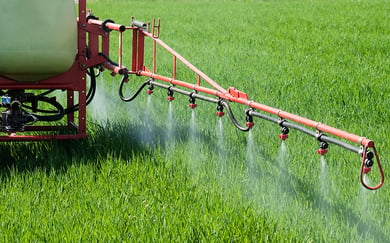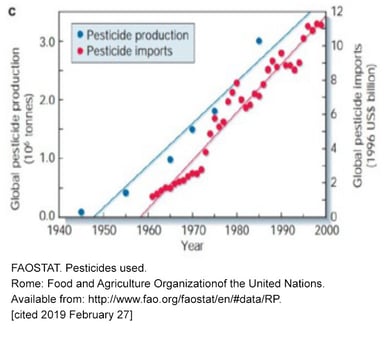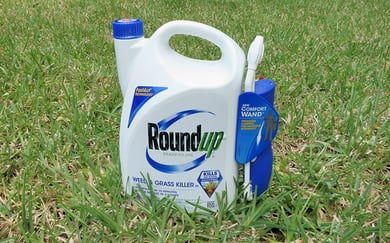Food Contamination Today: Not just heavy metals

A recently released congressional report found heavy metals in some popular brands of baby food.
Read the Report
Arsenic, cadmium, lead and mercury have dominated the news for the past few months when elevated levels were found in some batches of baby food. But while the FDA struggles to place new standards and limits in lieu of this seemingly rare occurrence of the big 4, a much broader issue faces Food & Beverage manufacturers on a daily basis.
Pesticides

60 years ago the industrialization of farming began. Since then, global pesticide use has grown steadily to 4.1 million tons per year in 2017, an increase of nearly 81% from 1990. Countless tests have proven that humans and animals have been exposed to increasing levels of chemical contaminants and although they are beneficial for crop production extensive use of pesticides can possess serious consequences due to their bio-magnification and persistent nature. Today there are nearly 1,000 pesticide ingredients registered in the U.S. and many are produced at increasingly higher toxicity to stay ahead of poison resistant weeds and insects.
Pesticides don’t make headlines every day...

Pesticide contamination is a constant concern for Food & Beverage manufacturers. Maximum residue levels for a specific pesticide chemical that is permitted in or on a specific human or animal food can change overnight. And the media storm associated with warning letters, fines or a re-call from the EPA for non-compliance is detrimental.
Finding pesticide residue is more difficult – here’s why
Food product contamination (including the big four and some 800 registered pesticides) comes from some combination of 3 main sources; biological, physical or chemical. Currently, many food manufacturers have internal staff with instrumentation that can identify a certain pathogen (biological) or target a defective closure (physical). Detection of chemical contaminants, however, can be much more complex. It takes improved systems and techniques to achieve reliable ppm or ppb detection along with a high level of experience with sample prep and adoption of a rigorous method.
Top categories of pesticides that have affected our food chain for decades
Organochlorine pesticides like DDT, methoxychlor, dieldrin, chlordane, toxaphene, mirex, kepone, lindane, and benzene hexachloride are chlorinated hydrocarbons that were used extensively from the 1940s through the 1960s in agriculture and mosquito control. Most have been taken off market, yet some are still registered for use in the US.
Organophosphorus pesticides include malathion, parathion, diazinon, fenthion, dichlorvos, chlorpyrifos and ethion. These chemicals account for a large share of all insecticides used in the United States. The residues of OPs are found on fruit trees, grains, cotton, sugarcane, lettuce, and cabbage and other vegetable crops.

Herbicides like Glyphosate and Atrazine. The active ingredient in the herbicide Roundup, which was made by Monsanto (now owned by Bayer). It is by far the most widely used pesticide in the world. It can now be found in the majority of rivers, streams, ditches and wastewater treatment plants, as well as in 70 percent of rainfall samples.
Hexachlorobenzene was introduced in 1945 as a fungicide for crop seeds, and is now found in all food types. It was banned for agricultural purposes in the EU as of 1981. Unfortunately it is still used as an industrial chemical and is released to the environment through waste incineration and a host of other high temperature, poor combustion processes. Worse still are highly toxic chlorinated dibenzo-p-dioxins, chlorinated dibenzofurans, and polychlorinated biphenyls with the major route of human exposure through our food supply.
Surprisingly, many pesticides that were outright banned or in the process of phasing out in the EU, China and Brazil are still widely used in the USA, at the level of tens to hundreds of millions of pounds annually.
Most pesticide residue issues are solved with little fanfare
Over 40 years ago, Quantum Analytics Group was hired by a major baby food manufacturer to test apples used in baby food for trace levels of Ethylene Dibromide – used as a pesticide and fumigant for grains and fruit, water-proofing preparations and an ingredient for anti-knock gasoline mixtures.
We tested raw, whole apples as well as finished product (apple sauce) utilizing GC analysis with electron capture/Hall detector and then double-confirmed with GCMS.
Our analysis concluded that the apple skin had EDB residue resulting in a noticeable level of EDB in the finished product – but not at levels that were deemed dangerous by the EPA at the time.
Ultimately, EDB was removed from use as a soil fumigant in the United States in 1983 but still used in other applications.
An increase in recalls
Last year, the USDA found 58 percent of foods sampled had detectable pesticide residue. There were 337 food recalls in 2019… and 363 in 2020.
Growing numbers could suggest that more companies are voluntarily recalling their products as soon as a potential public health threat surfaces, a trend that is likely related to the Food Safety Modernization Act (FSMA), a 2011 law that gave the FDA more powerful enforcement mechanisms.
“Some of the most glaring food safety headlines of the second quarter (of 2020) were fueled by food safety and public health advocates who continue to pressure companies and regulators alike for more safeguards,” the Recall Index reports. “We’re used to seeing their perspective in the media, but in some cases, they’ve turned it up a notch.”
FDA employs a three-fold strategy to enforce EPA’s tolerances for pesticide chemical residues in human and animal foods. In its regulatory pesticide residue monitoring program, FDA selectively tests a broad range of imported and domestic commodities for approximately 800 pesticide residues.
Read the 2020 Food & Beverage FDA Pesticide Residue Monitoring Program Q&A Report.
Our advice to the Food & Beverage industry:
With nearly 800 different pesticides being reported, we highly recommend all Food & Beverage companies set up regular screening programs and a proper risk assessment. Call (800) 448-2968 to discuss recommendations on developing a custom screening program that will keep your specific ingredients and finished products ahead of varying standards and limits.
In addition, your questions about specific contaminant issues like allegations of plastic contamination; chemical migration in packaging; unknown substances found in products; complaints of off-odors or off-flavors and products exposed to environmental contamination…can all be answered.










































